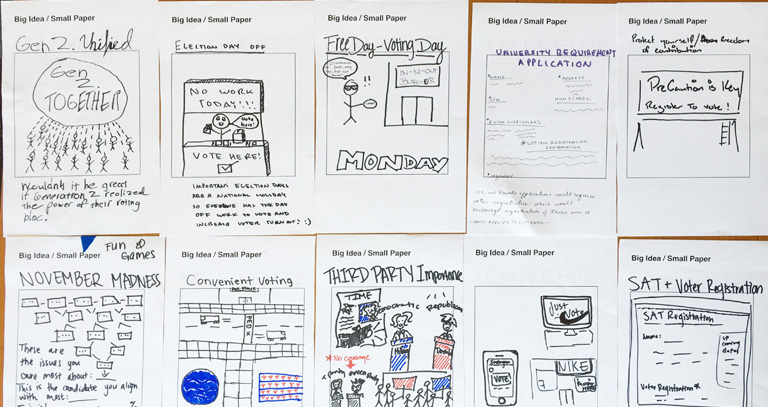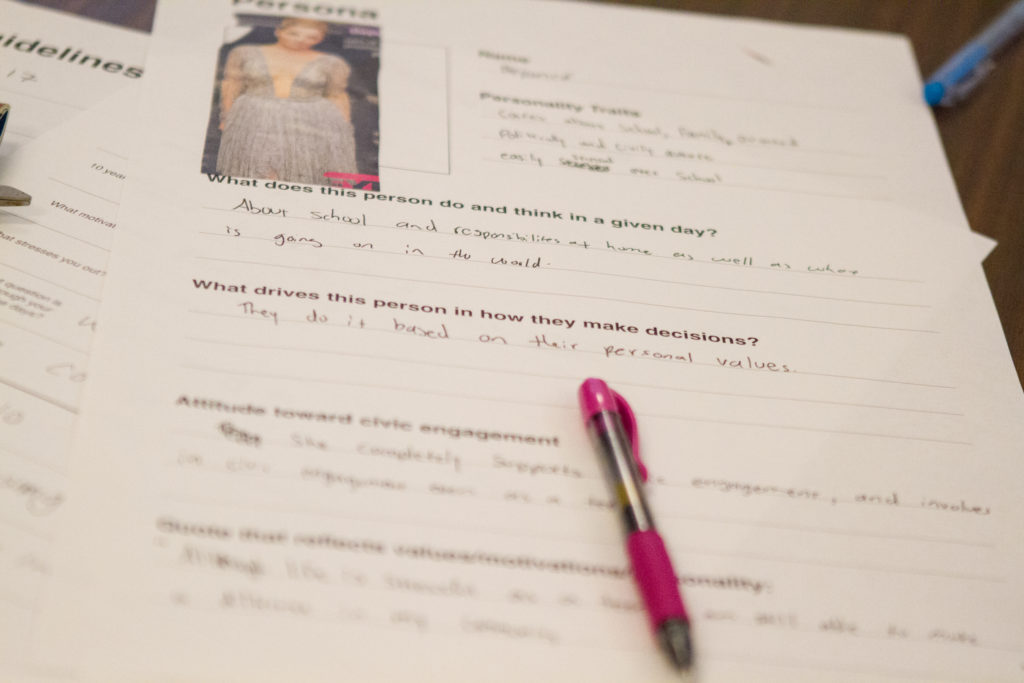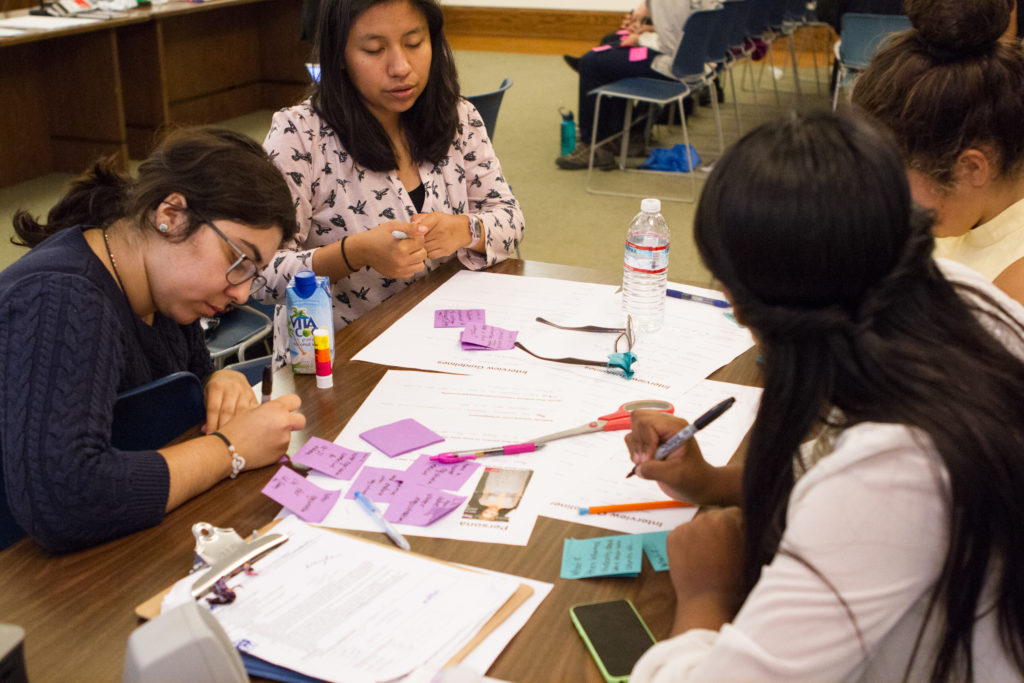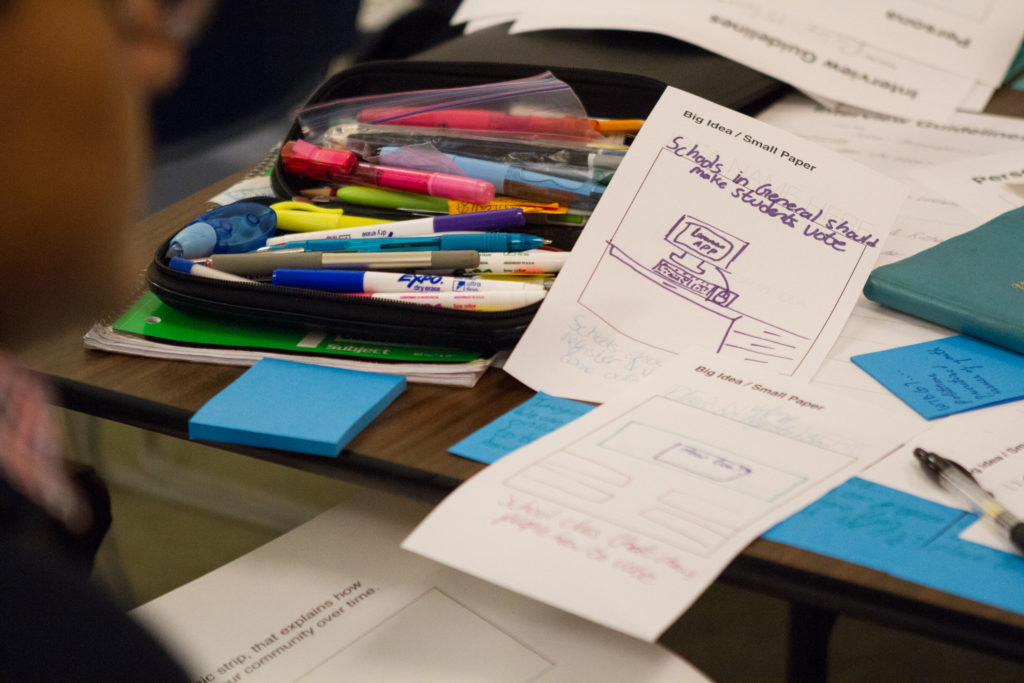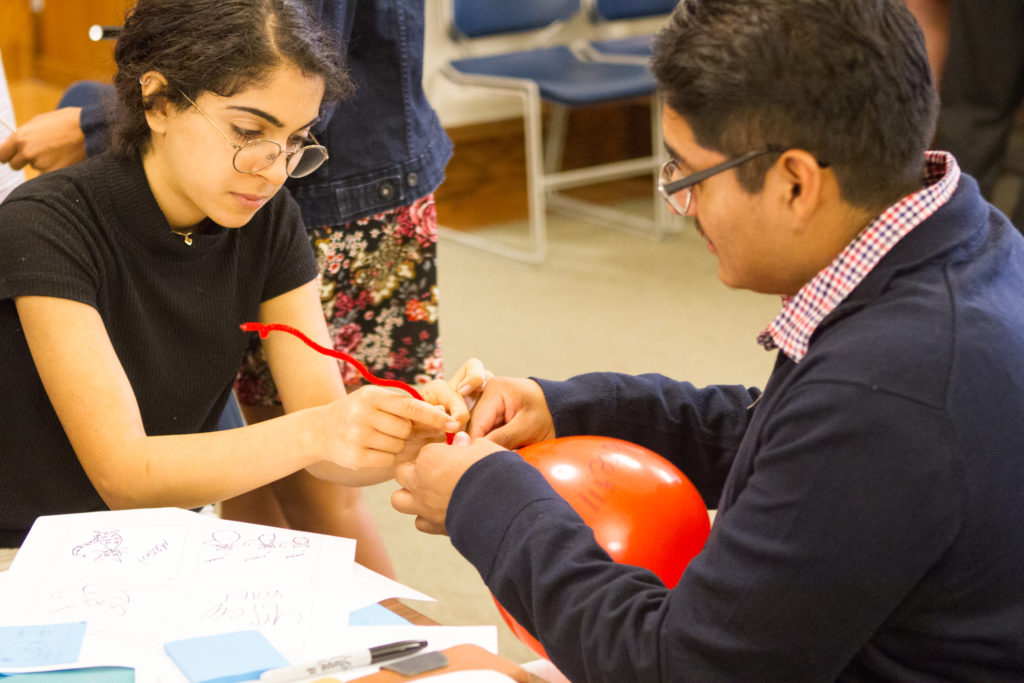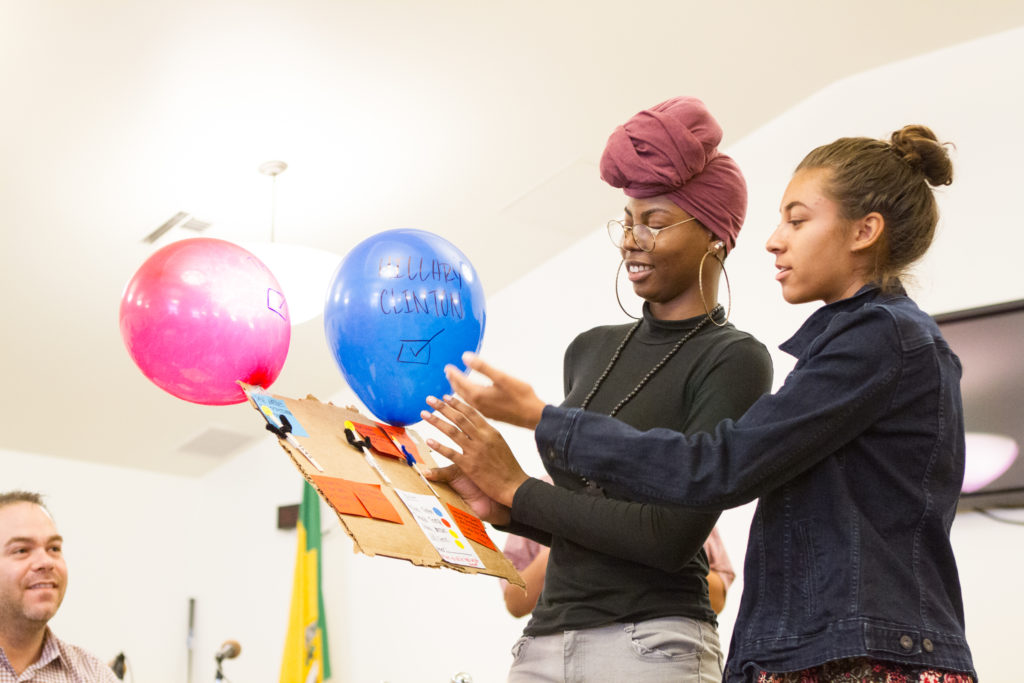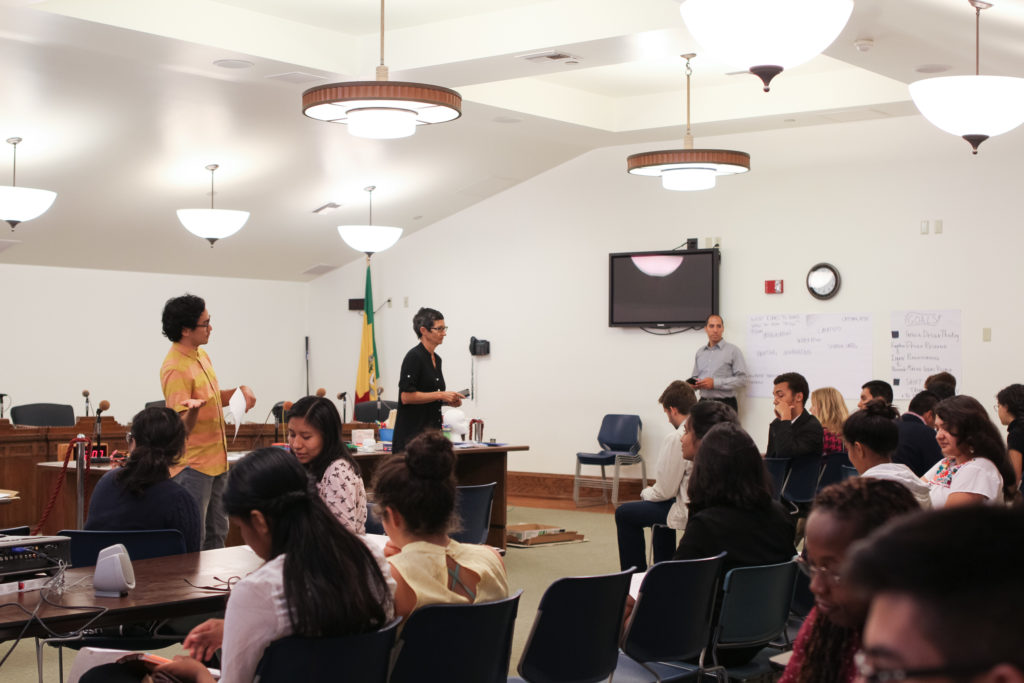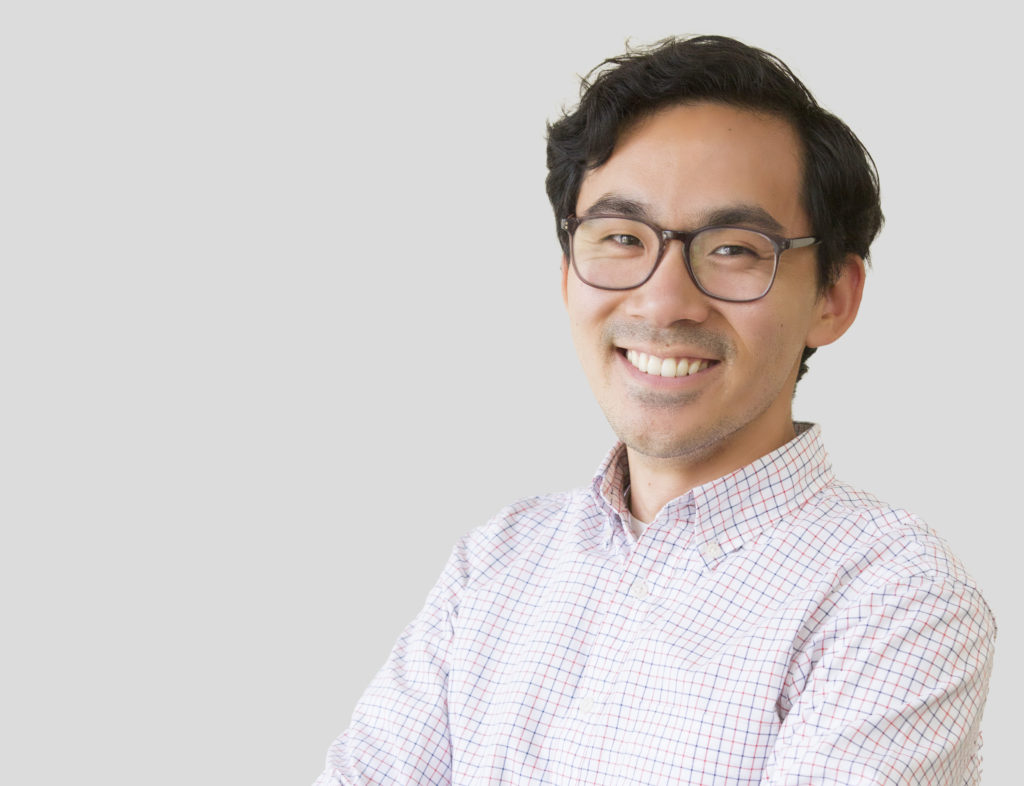In three short hours, youth from all corners of Los Angeles dove deep into design thinking. While nearly none of them had heard of such a methodology for problem finding and problem solving, they walked away saying things like, “Design isn’t just about colors and shapes, it’s also about creating and influencing change.” These Civic Youth participants gathered six times during the summer to hone skills in public speaking, writing, community building and more.
On Saturday, August 27, 2016 their design thinking session began with a presentation by Designmatters Vice President, Dr. Mariana Amatullo. Through diagrams, definitions, and case studies, she provided an overview of the design thinking process.
Professor Sherry Hoffman and I moved in and posed the question of the day, “How might we increase voter participation amongst Los Angeles youth?”
RESEARCH: The workshop’s participants being the target audience for this question, pairs of youth interviewed each other on lifestyle, values, goals and attitudes toward voting and the government.
SYNTHESIS: Based on their interview notes, youth created personas—this time in groups of four. They compared interview notes and found commonalities to synthesize into a fictional character. Trying to keep things visual, each team collaged a portrait of their persona.
IDEATION: Design thinking wouldn’t be complete without Post-it notes. So next, using their personas as inspiration, each participant jotted as many blue sky ideas as possible beginning with “What if…” or “Wouldn’t it be great if…”
DEVELOPMENT: After explaining the power of visualization in collective brainstorming, youth transitioned their Post-it ideas into sketched ideas using Sherry’s Big Idea / Small Paper template. By having sketches of everyone’s ideas for events, campaigns, systems, products, and platforms for increasing youth voter participation, we were all able to productively build off of each other.
STORYBOARDING: After a bagel break, groups imagined their Big Idea taking shape over time. Through a simple storyboarding exercise, youth sketched out the beginning, middle and end to their concepts.
PROTOTYPING: The reason for the table of craft supplies was finally revealed when we instructed participants to use the materials to construct a prop, costume, or set decoration to illustrate their concept in an improvised skit.
ROLEPLAYING: Each team role played their concepts in compelling three minute skits. Ideas ranged from looping in voter registration with other processes teens need to go through (such as the Common Application for college of driving tests), to creating friendly competition amongst rival schools as they race to register the most students, to offering incentives for voting like swag, coupons, or tax breaks.
In the days leading to the session, Sherry and I realized we designed an ambitious workshop for ourselves. Six phases of the design thinking process to cover in less than three hours with 30 high school and college students wasn’t going to be easy. In the end, I was less amazed that we were able to get through it all, and more amazed at the ingenuity and fearlessness that every participant possessed in generating new ideas and communicating them. As the Designmatters Fellow on Los Angeles’ Innovation Team, I am inspired not only by the participants’ ideas for increasing voter participation amongst youth, but by their ability to see the value in a designerly process of problem finding and solving.
With a background in cultural anthropology and design from Hampshire College, RJ Sakai has served as a design researcher in Uganda, Cuba, small town Massachusetts, East Harlem, and Los Angeles. In particular, he has an interest in the colliding of cultures—local and global, physical and imaginary. In the past, he has used designerly ways of framing and addressing problems to innovate in non-profit, startup, academic sectors. Since 2000 he’s had a goal to visit all the U.S. state capitals (35 down).
